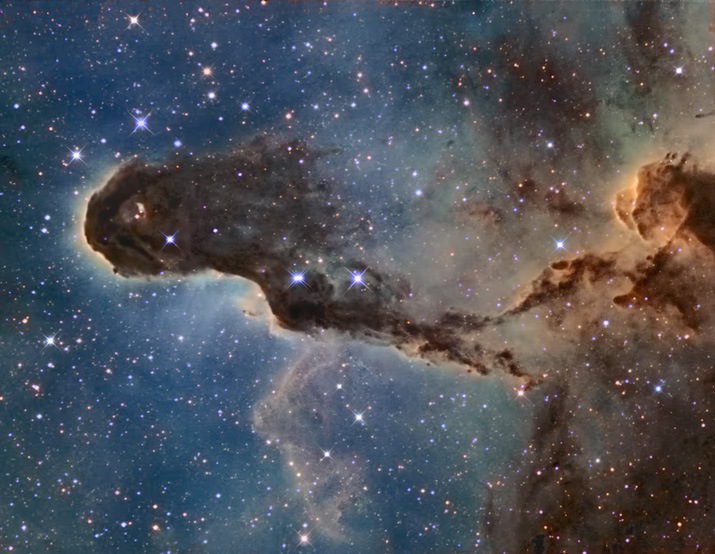
|
Date: Aug. 30 thru Sep. 3, 2014 - Location: Davis Mountians, TX Telescope: AT10RC - Camera: Apogee ALTA F8300 Exposure: SII 5 hr. - Ha 6.5 hr. - OIII 12.5 hr. - Exposure for Stars: R, G & B = 30 min. each All exposures binned 2X2 Image Credit: Preston Starr and Donald Waid Guided using Innovations Foresight On Axis Guider (ONAG) Click on the image to view at higher resolution. |

|
IC 1396A, also known as the Elephant Trunk Nebula, is a dense concentration of gas and dust located in the large emmision nebula IC 1396. This immense column of gas and dust is now known to be the site of new star formation. These new stars, thought to be less than 100,000 years old, were discovered in infrared images taken by the Spitzer Space Telescope in 2003. Two stars located in the head of the nebula have carved out a small cavity with their strong stellar winds and radiation. The entire nebula is being illuminated, and sculpted, by a very large type O star located outside the this image and to the left of the Elephant’s Trunk. The Elephant’s Trunk Nebula lies in the constellation Cepheus and is approximately 2,400 light-years from the Earth. Click here to view the image in a vertical format. The image above was assembled from three narrowband filtered images. These consisted of SII mapped to red, Ha mapped to green, and OIII mapped to blue. The Ha filtered image was also used for the luminance channel. The resulting image is a false color image using the standard Hubble pallet. The stars were overlaid with color data from a separate RGB image. 1http://en.wikipedia.org/wiki/Elephant's_Trunk_nebula
|